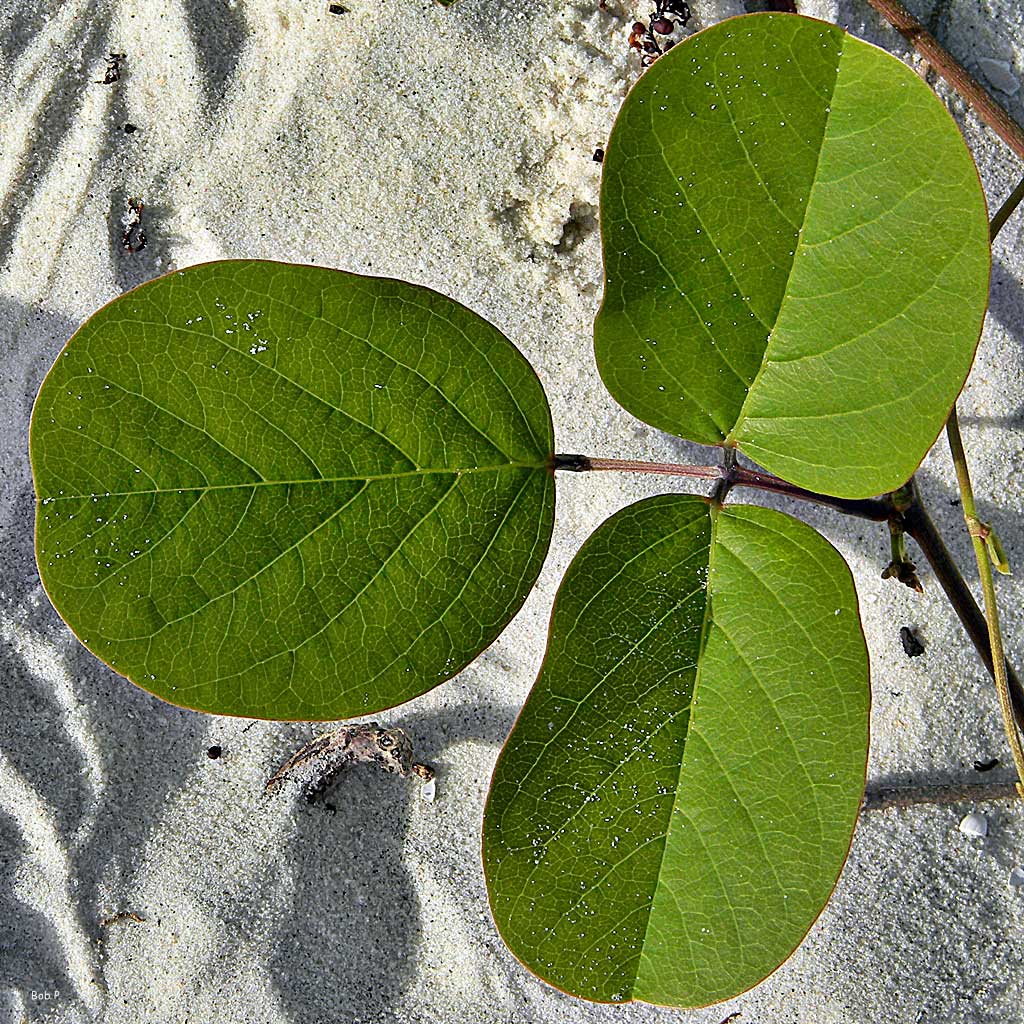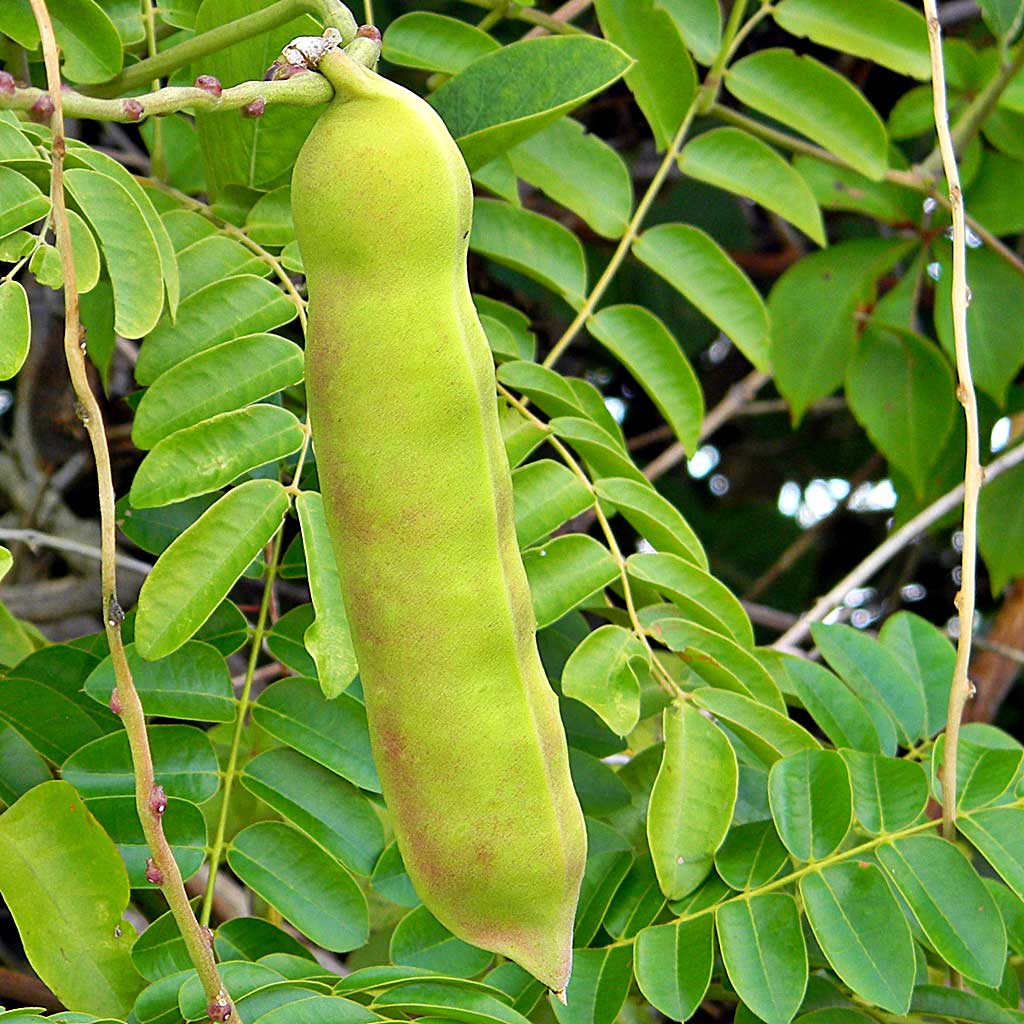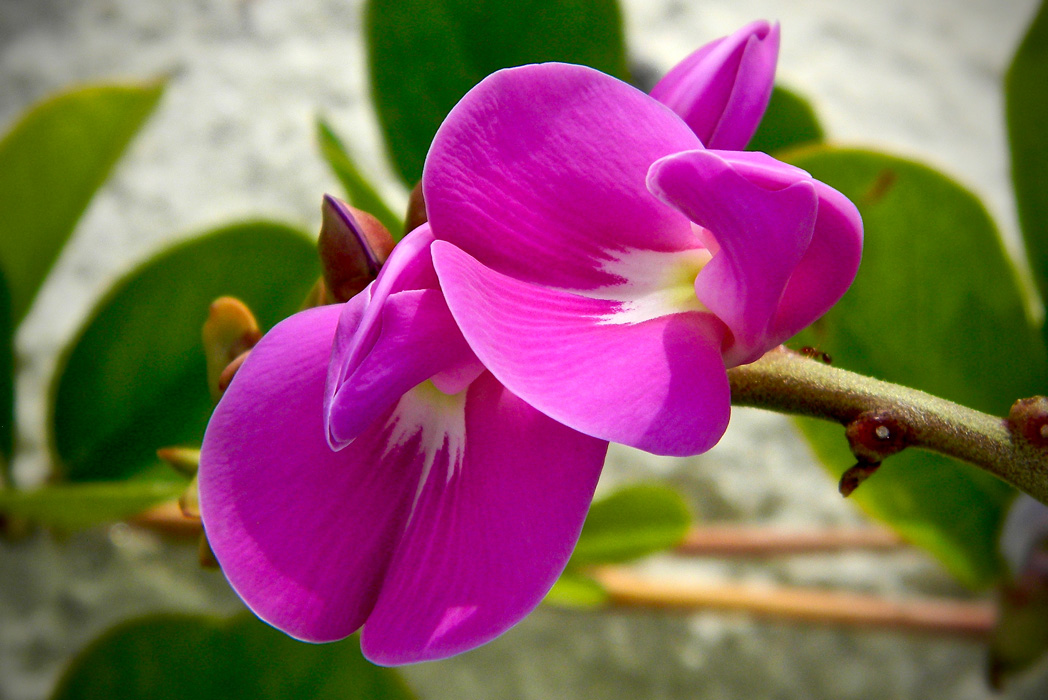Bay bean
Pictured above: Bay bean (Canavalia rosea) by Bob Peterson, CC BY 2.0. Click on terms for botanical definitions. View post as a PDF
Also known as Seaside bean, beach bean, coastal jackbean and Mackenzie bean, Bay bean is a sprawling, mat-forming vine. It occurs naturally in coastal strands and on dunes where it helps control erosion by stabilizing the sand. It blooms year-round, peaking in summer and fall. The flowers attract a variety of insects, but are primarily pollinated by bees.
Bay bean flowers are pinkish-purple with white centers that guide insects to nectar, and 10 yellow stamens that are mostly fused. The flowers are inverted (upside down), axillary and born in racemes. Leaves are trifoliate and alternately arranged. Leaflets are thick, leathery and ovoid with entire margins. They will fold in on themselves in response to hot sunlight. Stems are thick and fleshy. The fruit is a long (4–6 inches), flattened pod. As it matures, it turns from green to brown and develops ridges. Seeds are buoyant, which aids in their dispersal via ocean currents.


Compound trifoliate leaf and young seed pod (pictured in front of Gray nicker leaves). Photos by Bob Peterson (CC BY 2.0)
The young pods and seeds are edible when cooked but become toxic as they mature on the plant. Young seeds can be roasted, ground and added to coffee
Bay bean was formerly classified as C. maritima.
Family: Fabaceae (Legume, bean or pea family)
Native range: Coastal counties from Volusia and Dixie south into the Keys
To see where natural populations of Bay bean have been vouchered, visit florida.plantatlas.usf.edu.
Hardiness: Zones 9A–11
Lifespan: Long-lived perennial
Soil: Moderately moist to dry, well-drained sandy soils
Exposure: Full sun
Growth habit: 20–50’ long, up to 1’ high
Propagation: Cuttings, seed (scarify or soak in water before planting)
Garden tips: Bay bean is a fast-growing, mat-forming vine that makes a great groundcover along coastal dunes and in other dry areas where it may roam freely. It is not recommended for small areas. The plant is drought, salt and wind tolerant and is an excellent option for dune restoration plantings.
Plants may be available from nurseries that specialize in Florida native plants. Visit www.PlantRealFlorida.org to find a nursery in your area.

